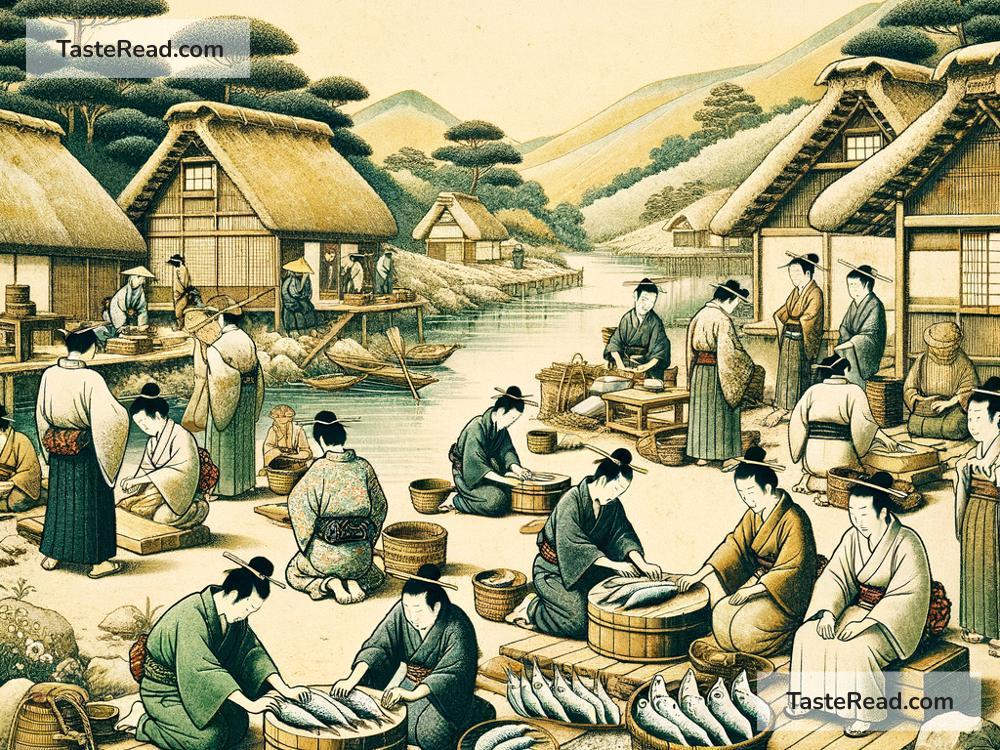The Origins of Sushi: Ancient Tales of Its First Creation
Sushi is one of the most popular foods in the world today. Its colorful appearance and unique taste make it stand out in the culinary world. While sushi is now associated with modern restaurants, convenience stores, and Japanese culture, this delicious dish has a long history dating back over a thousand years. The first sushi was very different from what we know today. To truly appreciate sushi, let’s explore its fascinating origins rooted in ancient tales and early traditions.
What Is Sushi?
Before diving into its history, it’s important to understand what sushi is. Sushi is often misunderstood as raw fish, but its main ingredient is vinegared rice, which can be topped, wrapped, or paired with various fillings including fish, vegetables, and eggs. The combination of flavors is what makes sushi so special.
The First Form of Sushi: Narezushi
The tale of sushi begins not in Japan, but in ancient Southeast Asia. Sushi has its roots in a preservation method known as narezushi, which originated along the banks of the Mekong River. Long ago, people living near rivers faced one major challenge: how to preserve fish so it wouldn’t spoil.
Narezushi was their solution. People would pack fish with cooked rice and salt, then let it ferment for several weeks or months. This fermentation process preserved the fish for long periods of time. When people wanted to eat the fish, they discarded the rice and only ate the fish itself. This was one of the first steps towards the development of sushi as we know it today.
Historians and food experts believe that narezushi made its way to Japan several thousand years ago. Japan, an island nation with plenty of access to fish because of its surrounding seas, adopted this method of preservation.
Sushi in Ancient Japan
In Japan, narezushi underwent major changes, becoming a unique part of Japanese food culture. Ancient Japanese tales and historical records show that sushi first emerged around the 8th century during the Nara Period (710–794 AD). This early sushi was still very close to its root form. Fish was fermented with rice, and only the fish was eaten—the rice was thrown away.
Back then, Japan had no refrigerators or storage systems, so fermentation was crucial to keep food fresh. Narezushi was particularly consumed near lakes, rivers, and coastal areas where people could access freshwater fish. It became more than just food—it started becoming part of traditional events, important gatherings, and cultural celebrations.
Funayama Kyūzō and the Evolution of Sushi
One interesting tale from Japanese history tells the story of Funayama Kyūzō, a man who lived during the Muromachi Period (1336–1573 AD). Kyūzō reportedly created a new form of narezushi where both the fermented fish and rice were eaten together. This innovation might have been one of the earliest instances of sushi resembling today’s dish. People found that the rice paired well with the salty, fermented fish, adding a nice contrast of flavors.
This small but important change marked a turning point in sushi’s evolution. Sushi began shifting from simply an act of preserving fish to becoming a real meal enjoyed by many.
Fresh and Fast Sushi Arrives
While fermented sushi was popular for centuries, Japan experienced another transformation during the Edo Period (1603–1868). This era was an exciting time for sushi because it saw the invention of hayazushi, or “fast sushi.” By this point, Japan had discovered ways to make rice slightly sour without waiting months for fermentation. Vinegar could be added to mimick the flavor traditionally created by the fish and rice fermenting together.
Hayazushi was faster to make, fresher, and more convenient than earlier forms. People didn’t have to wait for weeks to eat their food. Instead, they could enjoy sushi within just hours of preparation. This change reflects how sushi gradually became not just a survival food but a culinary art.
Sushi in Modern Times
The Edo Period also gave rise to sushi closely resembling today’s styles, including nigirizushi. Nigirizushi is a simple sushi featuring a ball of vinegared rice topped with fresh fish slices. In the bustling streets of Edo (modern-day Tokyo), sushi vendors sold nigirizushi as fast food, much like modern food trucks. The fish topping was often marinated or cooked because refrigeration didn’t exist yet, but the convenience made sushi wildly popular.
From these humble beginnings, nigirizushi and other modern sushi types spread throughout Japan and later the world. Advances in transportation, refrigeration, and technology helped sushi evolve into the global phenomenon it is today.
Conclusion
The story of sushi is one of adaptation and evolution. What began as a method of preserving fish in ancient Southeast Asia eventually transformed into one of Japan’s most beloved traditions. From the fermentation of narezushi to the fresh and fast nigirizushi, sushi has undergone many changes. Yet, at its heart, sushi remains a celebration of simplicity, freshness, and creativity.
Next time you enjoy sushi, take a moment to reflect on its long journey through history. Every piece is a testament to the ingenuity of ancient people and the traditions that shaped Japanese food culture. Sushi isn’t just food—it’s a slice of history presented on a plate!


